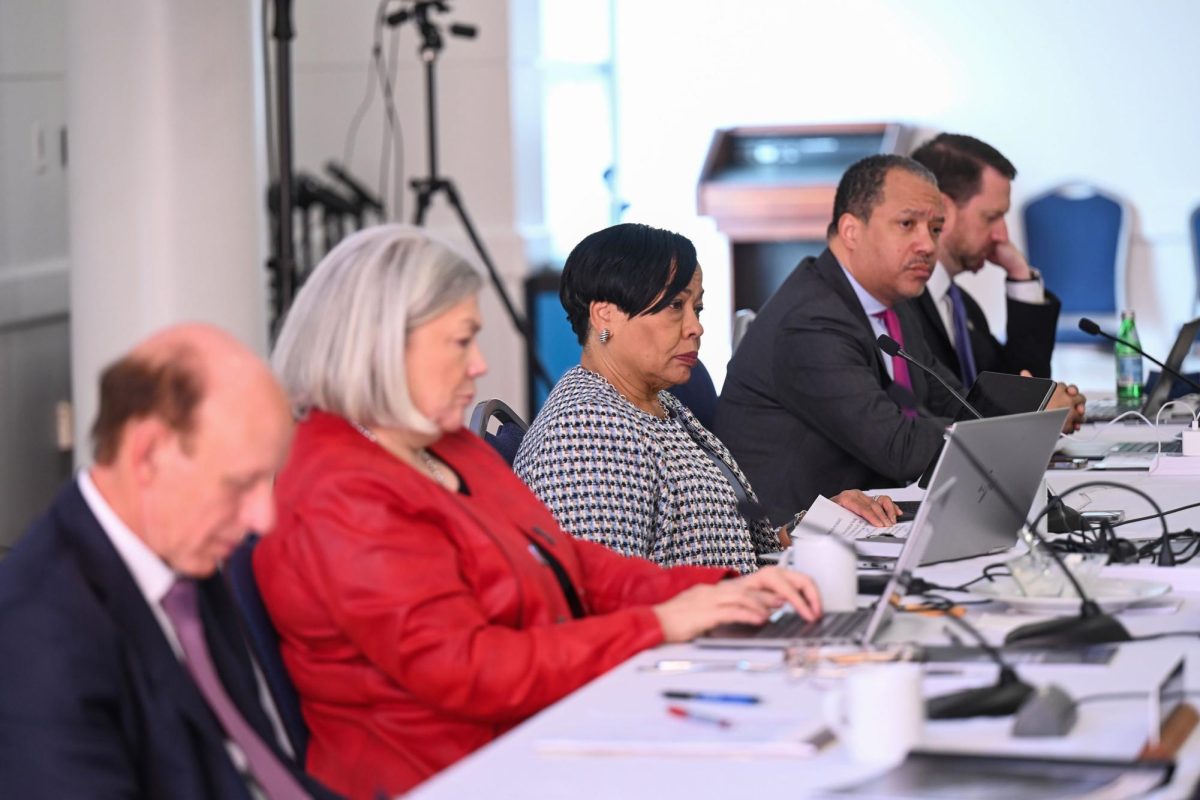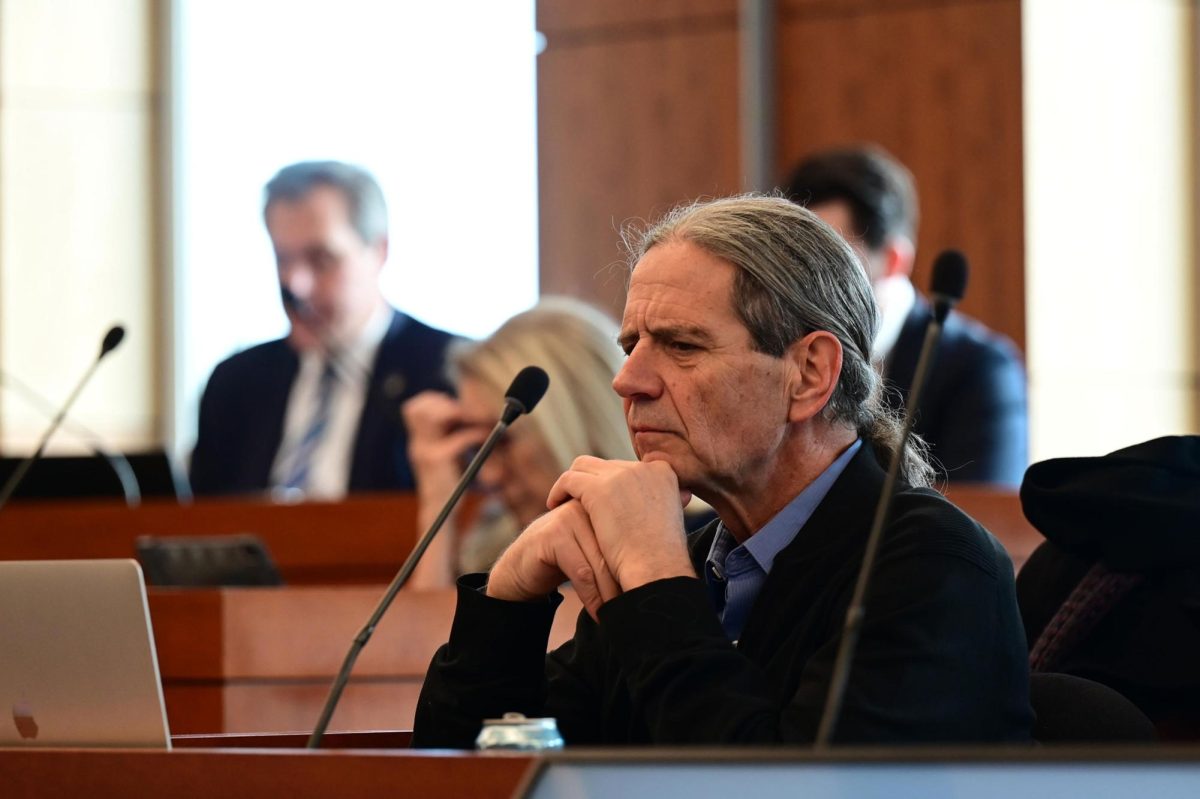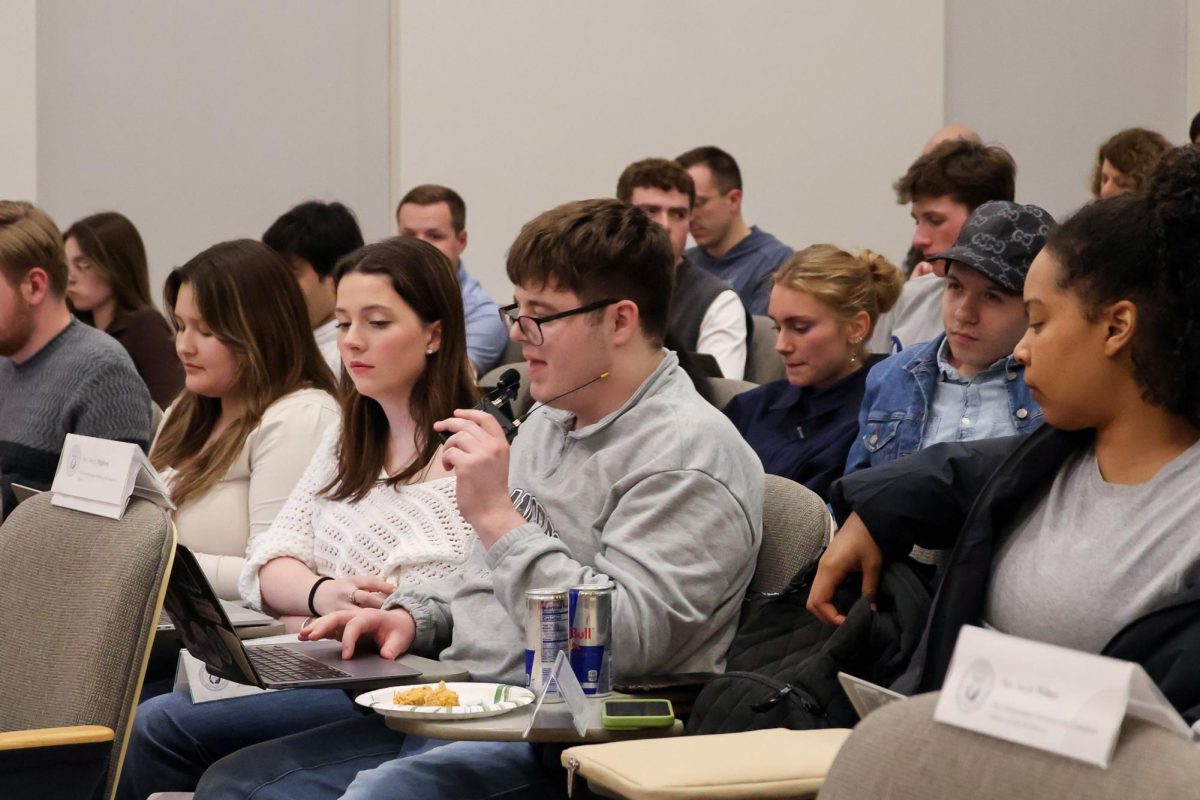Updated: Sept. 14, 2021 at 11:45 a.m.
Sophomore Luc Saint-Genies experienced itchy eyes and a cough for about a week after moving into his Shenkman Hall unit last month. After he received treatment for an infection and cold-like symptoms at the Colonial Health Center, he said he and his roommates found what appeared to be mold in the vents around their stove.
Saint-Genies said they explained their findings to a CHC nurse, who told them mold was likely the reason for their symptoms and suggested they temporarily relocate. But he said when he initially called the Campus Living and Residential Education office to ask about alternative places to stay, the staff member “fully dismissed” his concerns and said students would be evacuated if they were in danger.
“I do love GW, but it just feels a little bit like we’re not being listened to whatsoever,” Saint-Genies said. “Despite their own recommendations from the CHC, we’re being ignored.”
The Hatchet performed an at-home mold test on material in the fan above his stove and confirmed the substance as mold.
Saint-Genies is one of 75 GW community members who said apparent mold growth and water leaks in their campus buildings have given way to illness, relocation and an overflow of FixIt tickets in recent weeks. Similar maintenance issues have persisted on campus for years, but residents said officials have been slow to respond and accommodate their living situations as several students have developed coughing fits, severe congestion and allergic reactions.
Saint-Genies said he and his roommates decided to find other living arrangements on their own, staying with friends while they continue to wait for the apparent mold in their room to be removed. He said officials eventually granted him and his roommates alternative housing at the River Inn Sunday, nearly a week after they initially reported their concerns to officials.
“We decided to go look in common areas where mold grew, and we opened vents, and we saw some there,” he said. “And then more specifically, in the kitchen area, there is a significant buildup in and around the kitchen, quite prominent and even visible with the naked eye.”
Nearly 200 Townhouse Row residents were evacuated to local hotels last weekend and multiple students visited the hospital with flu-like symptoms. On Friday, officials confirmed they had observed what “appeared to be mold” in two of the units and mold assessors would inspect all residential buildings over the next two to three weeks.
Scott Burnotes, the vice president for safety and facilities, said all of the University’s buildings were “safe to occupy” and aligned with expert COVID-19 reopening guidelines during an interview about HVAC system updates earlier this month prior to the evacuation of Townhouse Row. Guidelines outlined by the American Society of Heating, Refrigerating and Air-Conditioning Engineers recommend that universities inspect their unoccupied buildings before reopening to identify potential mold growth.
Earlier in the week, faculty senators had introduced a resolution criticizing “misinformation” about publicized HVAC upgrade timelines. The resolution passed Friday.
“GW Safety and Facilities personnel are following up on all FixIt tickets in Shenkman and other buildings,” Burnotes said in an email. “We encouraged students concerned with anything they may have observed to submit a FixIt ticket, so the tickets have been filed and received at a variety of times.”
Burnotes declined to share the total number of requests, the cause of the reported mold outbreaks and the buildings where those requests were made, aside from Shenkman Hall.
Officials laid off dozens of employees in Facilities Planning, Construction and Management – which oversees maintenance issues like mold growth – last summer as part of broader efforts to mitigate the financial impact of the coronavirus pandemic. Officials ended a freeze on most hirings this summer but have also declined to comment on when they plan to refill positions in these departments.
Students across campus said they submitted FixIt requests to address potential mold but often waited days for officials to respond, and some requests have yet to be answered. More than 90 FixIt tickets related to ongoing mold issues remain open as of Saturday afternoon, according to records provided by a facilities staff member, who spoke with The Hatchet under the condition of anonymity because of concerns of retribution from the University.
In interviews, more than 70 students living in 10 residence halls said they identified apparent mold or water leaks in their rooms. The students included residents of Shenkman, Amsterdam, JBKO, Munson, Guthridge, Francis Scott Key and Somers halls, The Dakota and 1959 E St.
Student concerns over mold growth across campus follow years of maintenance issues at GW, including water leaks and multiple relocations from buildings like Guthridge Hall.
When Junior Hannah Longbottom called the emergency FixIt hotline Thursday to report apparent mold in her 1959 E St. air conditioning unit, she said staff told her to avoid her room as much as possible until they could inspect it.
“I was basically told don’t breathe it in,” Longbottom said. “And I’m not really sure how that’s possible considering it’s in my AC unit, so it’s pumping the mold spores throughout the air. I don’t know if they wanted me to hold my breath or something.”
Chesca Potter, a sophomore living in Shenkman, said one worker said he felt “lightheaded” after opening cabinet doors to remove mold growth under her sink last week.
“Three of my roommates are sick,” she said. “I don’t know if it’s from the mold or just a cold. It’s not COVID, they got tested, but then when you open the drawers under the sink, you get lightheaded, it hits you.”
Students and faculty said they have been met with mold growth, water leaks and flooding for years in offices inside multiple academic buildings along G Street – including the anthropology and American studies department buildings and Building GG, which houses the psychology department – when they returned this fall.
More than 10 faculty in the psychology department complained of mold, flooding and rats and demanded a new building in 2019. D.C. officials fined the University $1,037 for failing to keep the building’s sewer line free of obstruction.
The Board of Trustees approved $10 million in expenditures on top of GW’s budget funding to revamp buildings that required “immediate investment,” like modern heating and cooling equipment in Building GG.
But students and faculty in the building say they’re still facing some of the same issues.
Simon Kaplan, a cognitive neuroscience master’s student, said when he returned to his office in Building GG last December, his chair, desk and AC unit were “coated” with mold.
“I wouldn’t be surprised if any room in the building at any point had mold,” he said. “I think there’s perpetually a number of offices that have it, leaks that are recurring and probably creating mold where you can’t see it, and there’s one spot in my office that’s been treated for mold three times over the last five years.”
Tom Guglielmo, an associate professor of American studies, said of the eight offices in his department’s townhouse, at least three have had water leakages and mold growth in recent weeks, some of which were significant enough for officials to move a professor to a different office.
“The bottom line is even though they’ve been responsive to these individual cases, the broader problem really is unacceptable,” he said. “I mean these are the faculty members who are moving into offices that are just completely uninhabitable.”
Ishani Chettri, Lauren Sforza, Daniel Patrick Galgano, Baxter Wareham, Henry Huvos, Michelle Vassilev and Nicholas Anastacio contributed reporting.
This post was updated to correct the following:
The Hatchet incorrectly reported that Saint-Genies is a junior. He is a sophomore. We regret this error. This story was updated to clarify that Burnotes’ comments about safety in campus buildings came during an interview about HVAC system updates prior to the evacuation of Townhouse Row earlier this month. This story was also updated to clarify when the photos were taken at The Dakota and Building GG.











